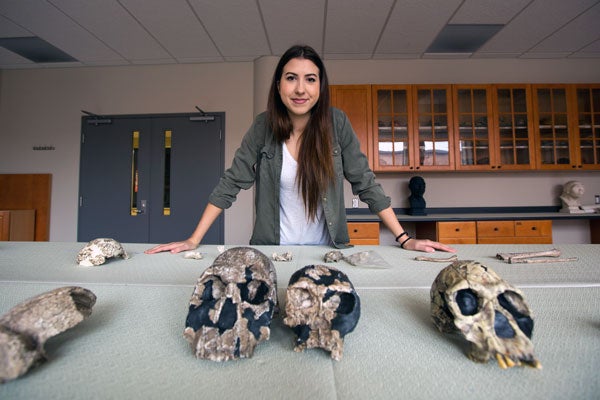
Did our hominid ancestors leave Africa and return?
Published: February 11, 2016
The phrase “Out of Africa” might conjure up visions of a romantic movie of 1985 or the memoirs on which they were based. To anthropologists the turn of phrase refers to the theory, dominant since the days of Charles Darwin, that our human ancestors probably evolved in this continent.
In The Real Planet of the Apes, Professor David Begun of U of T’s department of anthropology proposes that a significant component of human evolution in fact took place in Europe between nine million and 12.5 million years ago. Hominids, he argues, then drifted back to Africa in a "homecoming" response to climate change.
Begun’s theory – called “explosive” by Princeton University Press – is based substantially on field work in which undergraduates participated.
“I felt extremely lucky to have contributed to even the most minor extent in Dr. Begun's research,” says Klara Komza, a biological anthropology major. “It was my first taste at discovering something in the field.”
U of T News writer Arthur Kaptainis talked with Begun about his theories, his book and the importance of involving undergrad students in research.
You use the word “eureka” in the introduction to your book. Was there a specific moment at which your theory arose in your mind? Did it involve one of your own field discoveries?
There was a specific moment when the idea of a European origin occurred to me but I don't remember exactly when. And yes, it was as I was analyzing the skull we found during our excavations in Hungary. Several pieces of the skull and partial skeleton were found by field school students.
Was there anything about the European environment that made these evolutionary adaptations possible? Would there in fact be no homo sapiens without this European interlude?
Europe was somewhat more seasonal (cooler winters, warmer summers) than equatorial Africa at the time, though the difference was not as great as it is today. More seasonality means more challenges in finding food during the lean months, which may have led to selection for abilities to map the environment, figure out how to access a larger diversity of resources and to travel efficiently though the forest. These could explain the increase in brain size that we see at this time in apes, and the development of an ape-like body plan (long arms, short legs and a more vertical backbone.)
What caused hominids to migrate back to Africa?
Staring about 14 million years ago the climate began to cool and dry in Europe, which led to the evolutionary innovations I just described. But by 10 million years ago or so conditions had become too stressful for these apes, and they began disappearing from the more northern parts of Europe. Other apes were able to disperse south, tracking the southward retreating forests. Eventually they made their way back to Africa as conditions in southern Europe worsened, becoming too dry for apes (as it is today, for example, in Greece.)
Princeton University Press calls your claim “explosive.” How much resistance do you expect to meet among your peers? Have you already experienced resistance?
 Researchers have known about these ideas for some time. Some prefer the African origin hypothesis (most researchers who work in Africa) while others see the merits of my idea.
Researchers have known about these ideas for some time. Some prefer the African origin hypothesis (most researchers who work in Africa) while others see the merits of my idea.
There is a long tradition of thinking that African apes and humans evolved in Africa because that is where all African apes live today and that is where the first humans appear. But I think more and more researchers are starting to accept the European hypothesis as a viable one.
You teach undergraduate students and supervise summer field work in Europe. Have undergraduates been involved in any of your discoveries?
Undergrads have participated in the field school in Hungary for more than a decade. In that time students have found many primate fossils. Several students participated in our most important discovery, the ape skull that is the major inspiration for my ideas.
You use “hominids” to denote a family including chimpanzees and gorillas. But there are many differences, notably shorter arms and larger brains. Doesn’t this argue in favour of the exclusive application of “hominids” to humans and their ancestors?
Taxonomic terms are not based on amount of differences but on the distribution among species of similarities and differences. All great apes and humans (not just African apes and humans) are hominids because they are all more closely related to each other than any of them are related to the remaining apes, the gibbons and siamangs (hylobatids). Within the hominids, African apes and humans are more closely related to one another than any of them is to orangatangs, thus the distinction between hominines and pongines.
You also say that the popular notion that chimps and humans have almost 99 per cent of DNA in common is misunderstood.
The “99 per cent” thing is not so much misunderstood and incompletely understood. There is a huge number of genes in chimp and human genomes, which still leaves a lot of room for a large number of differences. These tend to be concentrated in genes that do many things, such as controlling other genes, which accounts for the important anatomical and behavioral differences between chimps and humans.




